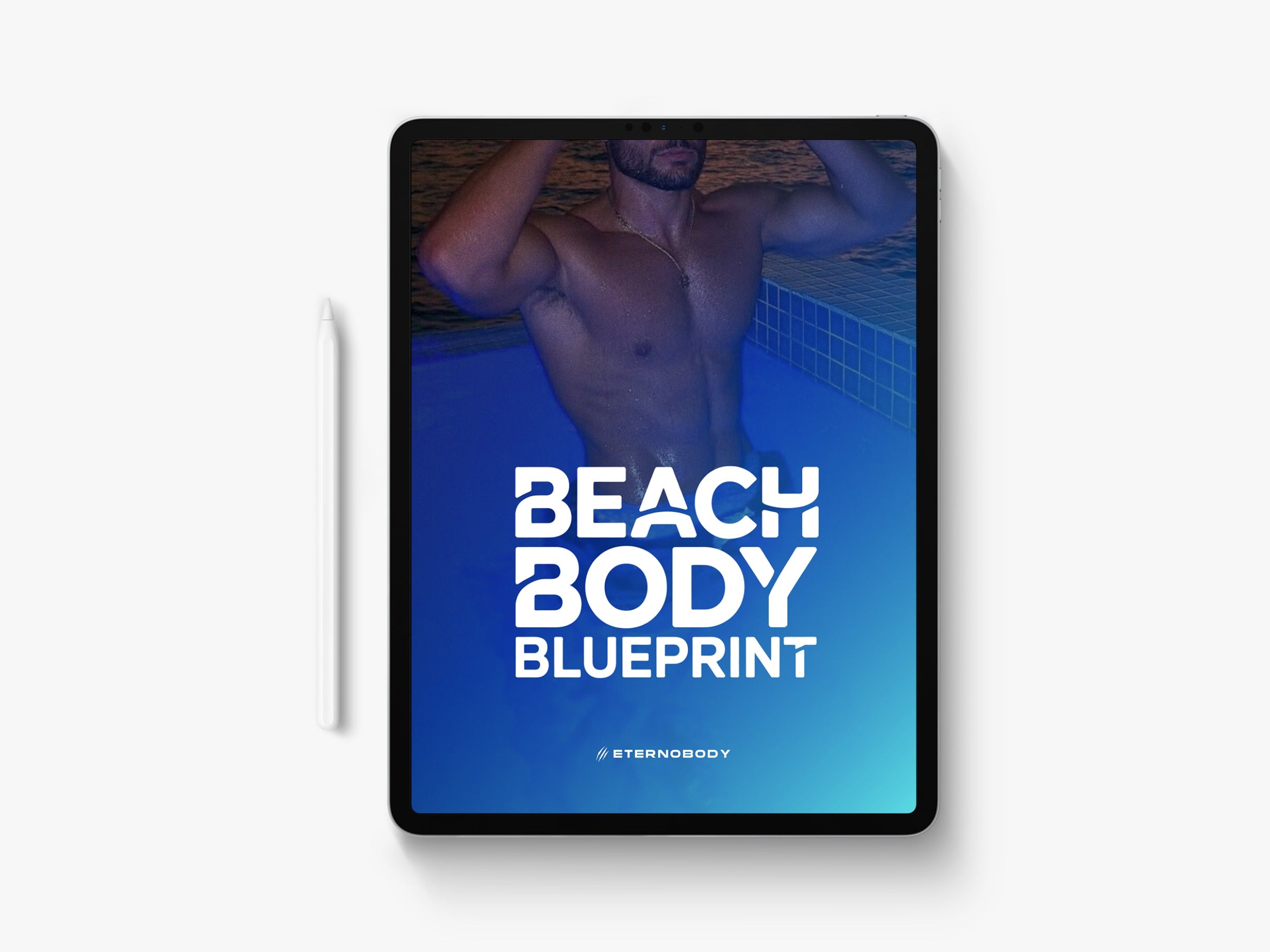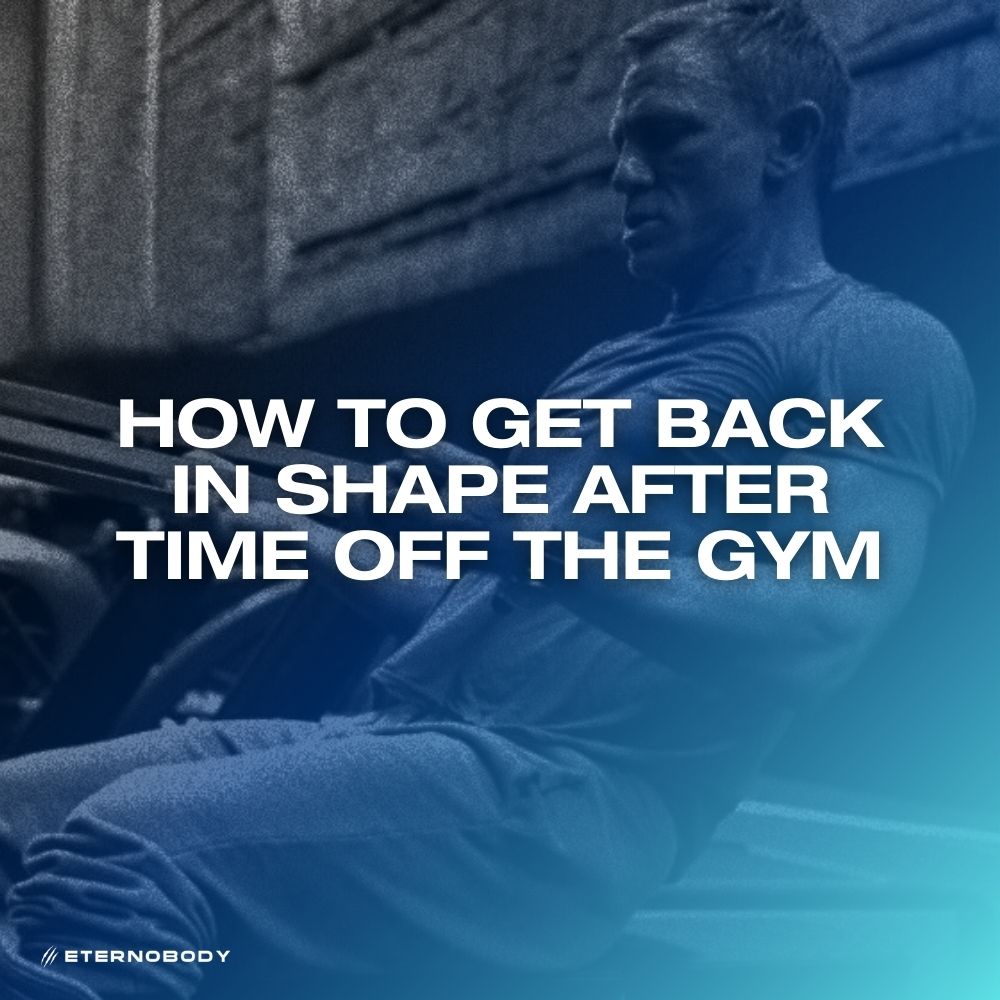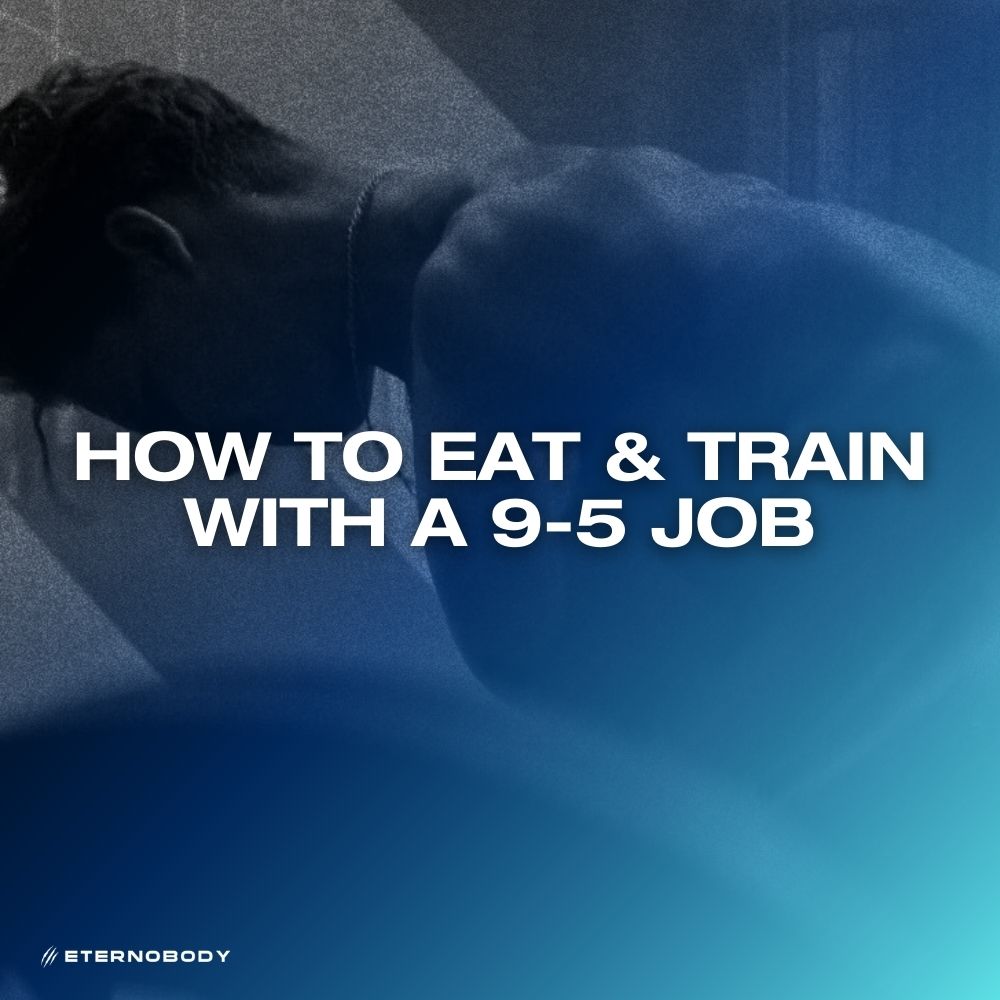 With so many curls to choose from which will reign supreme and come out on top as the best bicep builder?
With so many curls to choose from which will reign supreme and come out on top as the best bicep builder?INTRODUCTION
Looking to build bigger arms? The biceps are often the showpiece muscle that most men want to develop. But with so many exercises out there, which ones actually work best?
Based on my experience and current knowledge, I'll break down the top three bicep exercises that will help you build massive arms, and explain why they're so effective.
1. SINGLE-ARM PREACHER CURL
The single-arm dumbbell preacher curl tops our list as possibly the best bicep exercise for most people.
WHY IT WORKS SO WELL
- When your form is perpendicular to the ground, the exercise creates maximum torque at the elbow joint
- The preacher pad stops you from cheating by using your shoulders
- The single-arm version fits more body types than a barbell version
When we talk about "maximum torque" at the elbow joint, we're referring to the mechanical advantage this position creates. In a preacher curl, when your upper arm is positioned perpendicular to the ground, the resistance from the dumbbell produces the greatest force on your bicep exactly where the muscle is naturally strongest.
This is all about leverage. Unlike standing curls (which are perfectly good) where the resistance varies throughout the movement, the preacher curl maximises tension right in the middle portion of the curl where your bicep can handle the most load. This creates an optimal environment for muscle growth because you're able to apply significant force to the bicep at its strongest position, stimulating more muscle fibres and creating more potential for growth.
The preacher pad is crucial because it serves as a stabiliser that completely transforms the effectiveness of the exercise. When you curl without support, it's incredibly easy for your shoulders to take over and assist the movement - especially as you fatigue.
We call this "cheating" because it reduces the work your biceps have to do. By pressing your upper arm firmly against the pad throughout the entire movement, you eliminate the ability to use your shoulders to swing the weight up.
This isolation forces your bicep to do 100% of the work through the entire range of motion. Every time your arm wants to lift off that pad, that's your body trying to recruit other muscles to help - but keeping it locked down ensures your bicep gets the full training stimulus.
The single-arm approach addresses a significant issue many people face with barbell preacher curls - anatomy compatibility.
Everyone's shoulder width, arm length, and joint structure are different. When using a fixed barbell, your hands are locked in a position that might not align perfectly with your elbow joints.
This misalignment can feel uncomfortable on the wrists elbows over time. With dumbbells, you can adjust your grip and arm position to match your individual structure. For people with wider shoulders especially, this adjustment is critical as their arms naturally want to flare outward when on the preacher bench.
Using a single dumbbell allows you to position your arm optimally for your body, reducing joint stress and maximising bicep activation.
FORM TIPS
- Keep your upper arm flat against the pad throughout the movement
- Push your arm back into the pad while curling
- Think about jamming your forearm into your bicep at the top
- Don't let your elbow lift off the pad
Keeping your upper arm completely flush against the pad is non-negotiable for this exercise to work properly. Any space between your arm and the pad or any lifting of your elbow changes the mechanics of the movement and reduces bicep engagement.
Actively press your arm into the pad throughout the entire curl - this isn't just a passive positioning but an active pressing action that further stabilises your arm and increases bicep activation.
When you curl the weight up, don't just stop when your forearm is vertical. Instead, focus on the mind-muscle connection by imagining you're trying to smash your forearm directly into your bicep at the top of the movement. This promotes full contraction of the bicep and ensures you're working through the complete range of motion rather than cutting the movement short.
The tendency to let your elbow lift as you fatigue is extremely common. It happens because your body is trying to recruit your shoulder to help with the remaining reps. This is precisely when form becomes most critical - on those challenging final repetitions where maintaining perfect form will stimulate the most growth.
Even if it means doing partial reps while keeping your arm properly positioned, that's far more effective than full reps with poor form that don't target the bicep properly.
Here's an important setup tip. Don't sit all the way down on the bench. Stand or perch so you can position your upper arm properly - it should be straight up and down relative to the ground.
The setup is often overlooked but crucially important. Many people make the mistake of just sitting on the preacher bench without checking their arm position.
When you sit too low, your elbows may end up pointing slightly upward, which changes the mechanics of the exercise and can create unnecessary strain. Similarly, sitting too high might create a gap between your armpit and the top of the pad.
The ideal position has your upper arm exactly perpendicular to the ground when viewed from the side. This often means not fully sitting on the seat but instead perching on it or even standing.
Take the time to adjust your position before starting - this small detail can make a massive difference in how effectively the exercise targets your biceps.
2. BAYESIAN CABLE CURL
The second best bicep exercise is the bayesian cable curl (though this is mostly about doing any cable curl that trains your bicep most in the lengthened position).
WHY IT WORKS SO WELL
- It fully lengthens the bicep (unlike the preacher curl)
- Keeps tension on the muscle throughout the movement
Fully lengthening the bicep is critical for complete muscle development, and this is where the bayesian cable curl truly shines compared to the preacher curl. Y
our bicep muscle actually crosses both your elbow and shoulder joints, meaning its length is affected by both joint positions. When you extend your arm behind your body, you're stretching the bicep to its full length at both joints simultaneously. This creates what's called an "active stretch" on the muscle fibre.
Research shows that training muscles in their lengthened position can be particularly effective for stimulating growth. The preacher curl, while excellent for the mid-range, doesn't allow this full lengthening to occur.
By including both exercises in your program, you're ensuring your biceps are trained through their complete functional range.
Constant tension is another major advantage of the cable variation specifically. With dumbbells, when your arm is fully extended down, the weight is directly below your elbow, creating very little tension on the bicep at that point.
With cables properly positioned, there's meaningful tension even at the bottom position. This specific positioning ensures there's significant torque at the elbow joint throughout the entire range of motion, particularly at the bottom where dumbbells would provide minimal resistance.
This constant tension means your bicep never gets a break during the set, which can lead to greater mechanical tension and potentially more muscle growth.
FORM TIPS
- Perform a ‘waiter’s bow’ as you curl up the weight and you lean back again as you lower the weight for that nice stretch.
- Extend your arm back to fully lengthen the bicep.
- Keep your upper arm completely still throughout the movement.
- Don't let the cable touch your forearm as you curl up the weight.
The cable positioning relative to your arm is subtle but extremely important for the effectiveness of this exercise.
If the cable is directly in line with your arm, you'll lose tension at certain points in the range of motion. If it's at a 90-degree angle to your arm, the exercise becomes hardest at the start but too easy at the finish.
The ideal position has the cable coming from a direction that creates a consistent challenge throughout the movement - typically this means having the cable attachment around hip height and making sure you lean forward.
Take time to adjust this setup for your specific body proportions and the equipment available.
How far you extend your arm back depends somewhat on your individual mobility and structure.
The goal is to achieve full bicep lengthening without straining your shoulder. For most people, this means extending the arm back until it's slightly behind the plane of your torso, but not forced to an extreme position.
You should feel a significant stretch in your bicep at the bottom position. If you have limited shoulder mobility, even a moderate extension will be beneficial - don't force your arm into uncomfortable positions just to achieve more range.
Keeping your upper arm completely stationary throughout the exercise ensures that all the work is being done by elbow flexion (the bicep's primary function) rather than shoulder movement.
As you fatigue, there's a strong tendency to allow the upper arm to drift forward to make the exercise easier. This immediately reduces bicep activation and starts involving the front deltoid.
Even if it means you can't complete full range repetitions as you fatigue, maintaining this strict upper arm position and doing partial reps is far more effective for bicep development than allowing form to deteriorate.
3. HAMMER CURL
The third exercise is the hammer curl, which uses a neutral grip (palms facing each other).
WHY IT WORKS SO WELL
- The neutral grip shifts focus to other elbow flexors like the brachialis and brachioradialis
- Adds thickness to your arms that regular curls can miss
- Builds up the forearm area as well
The neutral grip fundamentally changes which muscles are emphasised during the curl motion, and this is essential for complete arm development.
When you curl with a supinated grip (palms up), the biceps brachii is the primary mover. However, when you switch to a neutral grip, the biomechanics change significantly.
This grip position reduces the biceps' mechanical advantage and increases the workload on the brachialis (which sits underneath your bicep) and the brachioradialis (which runs along the thumb side of your forearm).
These muscles are still elbow flexors but are often undertrained in typical curl routines.
The brachialis in particular is important because as it develops, it actually pushes up against the biceps from underneath, creating more overall arm thickness and a fuller appearance to your arm from all angles.
Without specifically targeting these supporting muscles, your arm development will be incomplete regardless of how well-developed your biceps become.
The thickness dimension of your arm is often overlooked in favour of the height of the bicep peak. However, truly impressive arms have substantial thickness when viewed from the front.
Regular supinated curls primarily build the height of your bicep peak, but hammer curls develop the width of your arms by targeting the brachialis. Since the brachialis lies underneath the biceps, when it grows, it pushes the biceps outward, making your arms appear thicker and more three-dimensional.
This is why many experienced natural bodybuilders emphasise the importance of hammer curls - they provide development in a dimension that standard curls simply cannot address effectively.
For complete, balanced arm development, this thickness component is absolutely critical.
Forearm development is another significant benefit of hammer curls that shouldn't be underestimated.
The neutral grip heavily engages the brachioradialis, which is technically a forearm muscle but contributes substantially to the visual appearance of your lower arm and the transition between your forearm and bicep.
Well-developed forearms complement bicep size and create a more balanced, powerful-looking arm overall. Many men focus exclusively on biceps while neglecting forearms, which creates a visually imbalanced appearance.
Hammer curls help address this imbalance by simultaneously training biceps, brachialis, and key forearm muscles in a single, efficient movement.
This makes them an excellent addition to any arm-building program, particularly for anyone looking to develop that complete, proportional arm development that extends beyond just the bicep peak.
FORM TIPS
- Keep your upper arm perpendicular to the ground
- If you have wide shoulders, you might need to lean slightly to one side, curl one arm at a time and tilt into the movement.
- Keep everything else still; only your forearm should move!
Maintaining your upper arm perpendicular to the ground might sound like a simple instruction, but it's crucial for properly targeting the intended muscles.
When your upper arm is angled inward or outward, it changes which muscles take on the primary load and can reduce the effectiveness of the exercise for the brachialis and brachioradialis.
The goal is to create a movement pattern where elbow flexion is the only action taking place. This often requires conscious attention, especially as fatigue sets in and your body wants to find ways to make the movement easier by changing arm positions or using momentum.
Body structure considerations become particularly important with hammer curls. If you have wider shoulders, attempting to do both arms simultaneously with proper form can be challenging because your arms naturally want to angle outward rather than staying perpendicular to the ground.
This is why many broader individuals benefit from doing single-arm hammer curls, leaning slightly to the working side. This allows you to position that working arm properly without compromising your form.
The difference in muscle activation between proper and improper arm positioning is significant enough to warrant this adjustment.
Don't be concerned about taking slightly longer to complete your sets - the improved quality of each repetition more than makes up for the additional time investment.
Isolation is the final key component for effective hammer curls.
There is a tendency for men to allow other body parts to assist dumbbell curling movement particularly through shoulder movement, torso swinging, or wrist adjustments. This dramatically reduces the effectiveness of the exercise.
The only movement should be pure elbow flexion - your forearm moving toward your upper arm. Your upper arm shouldn't move forward or backward, your torso shouldn't sway, and your wrist position should remain neutral throughout.
As fatigue builds and completing full reps becomes challenging, it's far better to do partial reps with perfect form than to maintain full range of motion by introducing these compensatory movements.
The muscle doesn't know how far the weight moved; it only knows how hard it had to work.
CONCLUSION
By focusing on these three key exercises: the single-arm preacher curl, bayesian cable curl, and hammer curl, you'll target your biceps from every angle and position.
This approach ensures complete arm development rather than just relying on your one favourite swingy curl. Remember that consistency, intensity and progressive overload are your best allies in building impressive arms.
Start with these movements as a solid base, master your form, and gradually increase the challenge. Your biceps will respond with the size and definition you're after.




